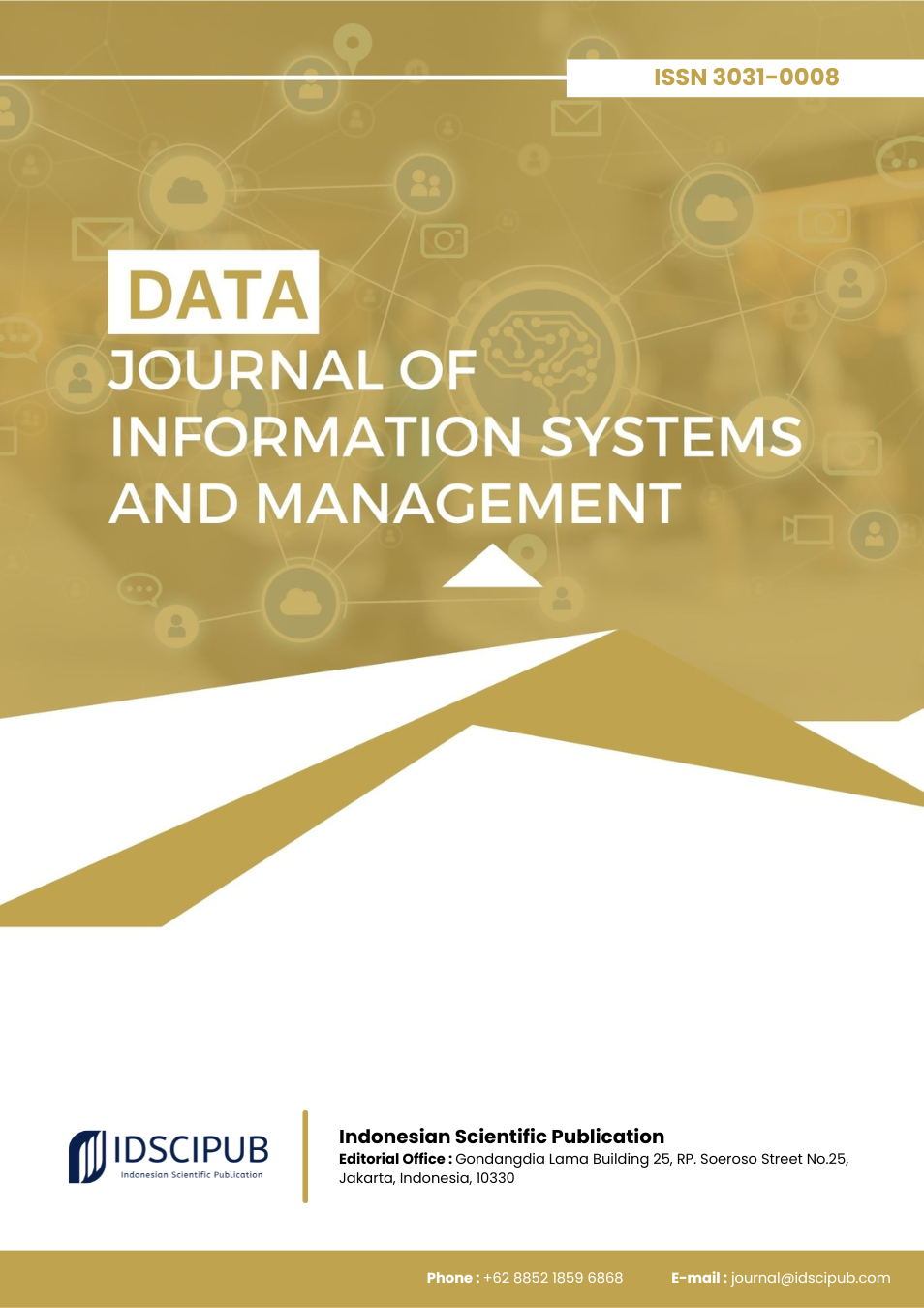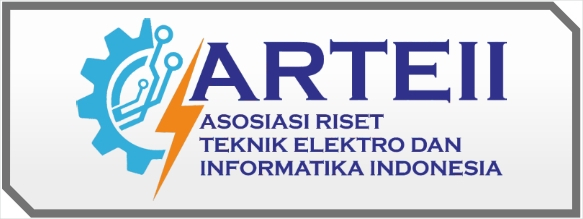Empirical Insights into Network Modularity and Brokerage under Remote Work Conditions
DOI:
https://doi.org/10.61978/data.v3i2.924Keywords:
Remote Work, Collaboration Networks, Social Network Analysis, Modularity, Brokerage, Digital Fluency, Team CohesionAbstract
The COVID 19 pandemic triggered a global shift toward remote work, reshaping how teams coordinate and collaborate. This study investigates the structural consequences of remote work on organizational communication networks using Social Network Analysis (SNA). Drawing on data from Microsoft 365, Slack, and GitHub, the research analyzes metrics such as modularity, E I Index, betweenness centrality, and tie churn to evaluate changes in collaboration structures. We analyzed communication patterns by building weighted interaction networks based on digital activity. These networks were generated from logs of email, chat, and code collaboration tools, structured weekly or monthly depending on platform. These findings underscore the challenges organizations face in maintaining cohesion and innovation in distributed teams. The study highlights async first communication strategies, cross team structures, and digital fluency as critical levers for network resilience. This research contributes empirical benchmarks for evaluating remote collaboration and proposes actionable metrics for organizational design in digital work environments.
References
Alshurideh, M. T., Kurdi, B. A., Alshurideh, H., & Alkurdi, S. (2022). Impact of Organizational Leadership on Organizational Performnace During Covid-19 Pandemic. International Journal of Theory of Organization and Practice (Ijtop), 2(1), 52–64. https://doi.org/10.54489/ijtop.v2i1.167 DOI: https://doi.org/10.54489/ijtop.v2i1.167
Amelkin, V., Askarisichani, O., Kim, Y. J., Malone, T. W., & Singh, A. K. (2018). Dynamics of Collective Performance in Collaboration Networks. Plos One, 13(10), e0204547. https://doi.org/10.1371/journal.pone.0204547 DOI: https://doi.org/10.1371/journal.pone.0204547
Archibald, M. M., Lawless, M., Maria Alejandra Pinero de Plaza, & Kitson, A. (2023). How Transdisciplinary Research Teams Learn to Do Knowledge Translation (KT), and How KT in Turn Impacts Transdisciplinary Research: A Realist Evaluation and Longitudinal Case Study. Health Research Policy and Systems, 21(1). https://doi.org/10.1186/s12961-023-00967-x DOI: https://doi.org/10.1186/s12961-023-00967-x
Bonanomi, M. M., Hall, D., Staub‐French, S., Tucker, A., & Talamo, C. (2019). The Impact of Digital Transformation on Formal and Informal Organizational Structures of Large Architecture and Engineering Firms. Engineering Construction & Architectural Management, 27(4), 872–892. https://doi.org/10.1108/ecam-03-2019-0119 DOI: https://doi.org/10.1108/ECAM-03-2019-0119
Caduff, A., Daly, A. J., Finnigan, K. S., & Leal, C. C. (2022). The Churning of Organizational Learning: A Case Study of District and School Leaders Using Social Network Analysis. Journal of School Leadership, 33(4), 355–381. https://doi.org/10.1177/10526846221134006 DOI: https://doi.org/10.1177/10526846221134006
Caldeira, C., Machado, L., Perin, M. G., & Cleidson R. B. de Souza. (2021). Remote Workers’ Wellbeing in the Age of COVID-19. https://doi.org/10.5753/sbsc_estendido.2021.16044 DOI: https://doi.org/10.5753/sbsc_estendido.2021.16044
Dalka, R. P., & Zwolak, J. P. (2022). Restoring the Structure: A Modular Analysis of Ego-Driven Organizational Networks. https://doi.org/10.48550/arxiv.2201.01290
Gochhayat, J., Giri, V. N., & Suar, D. (2017). Influence of Organizational Culture on Organizational Effectiveness: The Mediating Role of Organizational Communication. Global Business Review, 18(3), 691–702. https://doi.org/10.1177/0972150917692185 DOI: https://doi.org/10.1177/0972150917692185
Harmath, P. (2018). How Problems of Business Develop Their “Network” Against Organizational Structure. 856–862. https://doi.org/10.31410/itema.2018.856 DOI: https://doi.org/10.31410/itema.2018.856
Henke, J. B., Jones, S. K., & O’Neill, T. (2022). Skills and Abilities to Thrive in Remote Work: What Have We Learned. Frontiers in Psychology, 13. https://doi.org/10.3389/fpsyg.2022.893895 DOI: https://doi.org/10.3389/fpsyg.2022.893895
Hofman, E., Halman, J. I., & Song, M. (2016). When to Use Loose or Tight Alliance Networks for Innovation? Empirical Evidence. Journal of Product Innovation Management, 34(1), 81–100. https://doi.org/10.1111/jpim.12325 DOI: https://doi.org/10.1111/jpim.12325
Jesuthasan, J., Powell, R. A., Burmester, V., & Nicholls, D. (2021). ’We Weren’t Checked in On, Nobody Spoke to Us’: An Exploratory Qualitative Analysis of Two Focus Groups on the Concerns of Ethnic Minority NHS Staff During COVID-19. BMJ Open, 11(12), e053396. https://doi.org/10.1136/bmjopen-2021-053396 DOI: https://doi.org/10.1136/bmjopen-2021-053396
Kerrigan, S., Feng, S., Vuthaluru, R., Ifenthaler, D., & Gibson, D. (2021). Network Analytics of Collaborative Problem-Solving. 53–76. https://doi.org/10.1007/978-3-030-65657-7_4 DOI: https://doi.org/10.1007/978-3-030-65657-7_4
Khodabocus, S., & Seyıs, S. (2023). Roadmap for Integrating BIM and Lean Methods Throughout the Lifecycle of Modular Construction Projects. Journal of Construction Engineering Management & Innovation, 6(1), 48–56. https://doi.org/10.31462/jcemi.2023.01048056 DOI: https://doi.org/10.31462/jcemi.2023.01048056
Kim, S. L., Son, S. Y., & Yun, S. (2018). Abusive Supervision and Knowledge Sharing: The Moderating Role of Organizational Tenure. Personnel Review, 47(1), 22–38. https://doi.org/10.1108/pr-08-2016-0199 DOI: https://doi.org/10.1108/PR-08-2016-0199
Kotera, Y., Ozaki, A., Miyatake, H., Tsunetoshi, C., Nishikawa, Y., Kosaka, M., & Tanimoto, T. (2022). Qualitative Investigation Into the Mental Health of Healthcare Workers in Japan During the COVID-19 Pandemic. International Journal of Environmental Research and Public Health, 19(1), 568. https://doi.org/10.3390/ijerph19010568 DOI: https://doi.org/10.3390/ijerph19010568
Lartey, F. M., & Randall, P. M. (2021). Indicators of Computer-Mediated Communication Affecting Remote Employee Engagement. Journal of Human Resource and Sustainability Studies, 09(01), 82–92. https://doi.org/10.4236/jhrss.2021.91006 DOI: https://doi.org/10.4236/jhrss.2021.91006
Leppälä, M., & Huhtamäki, J. (2022). Enabling Knowledge Broker Analysis Through Actor Clusters in Organizational Structures in Enterprise Social Media. https://doi.org/10.24251/hicss.2022.071 DOI: https://doi.org/10.24251/HICSS.2022.071
Palumbo, R. (2020). Let Me Go to the Office! An Investigation Into the Side Effects of Working From Home on Work-Life Balance. International Journal of Public Sector Management, 33(6/7), 771–790. https://doi.org/10.1108/ijpsm-06-2020-0150 DOI: https://doi.org/10.1108/IJPSM-06-2020-0150
Pamuła, A., & Zalewska-Turzynska, M. (2023). Internal Communication Satisfaction While Remote Work: The Organizational Culture Perspective. European Research Studies Journal, XXVI(Issue 2), 30–48. https://doi.org/10.35808/ersj/3137 DOI: https://doi.org/10.35808/ersj/3137
Pino-Yancovic, M., Ahumada, L., DeFerrari, J., Corrêa, F. I., & Valenzuela, J. P. (2022). Collaborating Inside and Outside the School: Together Overcoming COVID-19 Challenges in Chile. Journal of Professional Capital and Community, 7(4), 390–405. https://doi.org/10.1108/jpcc-04-2022-0025 DOI: https://doi.org/10.1108/JPCC-04-2022-0025
Pradoto, H., Haryono, S., & Wahyuningsih, S. H. (2022). The Role of Work Stress, Organizational Climate, and Improving Employee Performance in the Implementation of Work From Home. Work, 71(2), 345–355. https://doi.org/10.3233/wor-210678 DOI: https://doi.org/10.3233/WOR-210678
Qi, L., Xu, Y., & Liu, B. (2023). Work Out of Office: How and When Does Employees’ Self-Control Influence Their Remote Work Effectiveness? Frontiers in Psychology, 14. https://doi.org/10.3389/fpsyg.2023.1265593 DOI: https://doi.org/10.3389/fpsyg.2023.1265593
Röth, P., & Doehne, M. (2023). Cohesion Is Lower in Virtualized Collaborations: A Comparison of Teams’ Network Structure. Small Group Research, 55(4), 560–594. https://doi.org/10.1177/10464964231202454 DOI: https://doi.org/10.1177/10464964231202454
Sanders, K., Nguyen, P. T., Bouckenooghe, D., Rafferty, A. E., & Schwarz, G. M. (2020). Unraveling the What and How of Organizational Communication to Employees During COVID-19 Pandemic: Adopting an Attributional Lens. The Journal of Applied Behavioral Science, 56(3), 289–293. https://doi.org/10.1177/0021886320937026 DOI: https://doi.org/10.1177/0021886320937026
Sheveleva, A., & Rogov, E. (2021). Organization of Remote Work in the Context of Digitalization. E3s Web of Conferences, 273, 12042. https://doi.org/10.1051/e3sconf/202127312042 DOI: https://doi.org/10.1051/e3sconf/202127312042
Sitorus, F. H. D. (2018). The Influence of Perceived Organizational Support and Internal Communication Toward Work Engagement. https://doi.org/10.2991/icosop-17.2018.44 DOI: https://doi.org/10.2991/icosop-17.2018.44
Suortti, C. S., & Sivunen, A. (2023). Communicative Tensions in Remote Work During the COVID-19 Pandemic. Management Communication Quarterly, 38(2), 386–412. https://doi.org/10.1177/08933189231199052 DOI: https://doi.org/10.1177/08933189231199052
Toscano, F., & Zappalà, S. (2021). Overall Job Performance, Remote Work Engagement, Living With Children, and Remote Work Productivity During the COVID-19 Pandemic. European Journal of Psychology Open, 80(3), 133–142. https://doi.org/10.1024/2673-8627/a000015 DOI: https://doi.org/10.1024/2673-8627/a000015
Vincenzi, C. D., Pansini, M., Ferrara, B., Buonomo, I., & Benevene, P. (2022). Consequences of COVID-19 on Employees in Remote Working: Challenges, Risks and Opportunities an Evidence-Based Literature Review. International Journal of Environmental Research and Public Health, 19(18), 11672. https://doi.org/10.3390/ijerph191811672 DOI: https://doi.org/10.3390/ijerph191811672
Vohra, N., & Thomas, N. (2016). Investigating Organizational Learning Through Social Network Analysis: The Case of a Consultancy Firm in India. Thunderbird International Business Review, 58(6), 587–600. https://doi.org/10.1002/tie.21777 DOI: https://doi.org/10.1002/tie.21777
Yousefi‐Nooraie, R., Qin, Q., Wagg, A., Berta, W., & Estabrooks, C. A. (2023). Building a Communication and Support Network Among Quality Improvement Teams in Nursing Homes: A Longitudinal Study of the SCOPE Trial. https://doi.org/10.21203/rs.3.rs-3260498/v1 DOI: https://doi.org/10.21203/rs.3.rs-3260498/v1
Zito, M., Ingusci, E., Cortese, C. G., Giancaspro, M. L., Manuti, A., Molino, M., Signore, F., & Russo, V. (2021). Does the End Justify the Means? The Role of Organizational Communication Among Work-From-Home Employees During the COVID-19 Pandemic. International Journal of Environmental Research and Public Health, 18(8), 3933. https://doi.org/10.3390/ijerph18083933 DOI: https://doi.org/10.3390/ijerph18083933
Zoonen, W. v., Sivunen, A., Blomqvist, K., Olsson, T., Ropponen, A., Henttonen, K., & Vartiainen, M. (2021). Understanding Stressor–strain Relationships During the COVID-19 Pandemic: The Role of Social Support, Adjustment to Remote Work, and Work–life Conflict. Journal of Management & Organization, 27(6), 1038–1059. https://doi.org/10.1017/jmo.2021.50 DOI: https://doi.org/10.1017/jmo.2021.50






